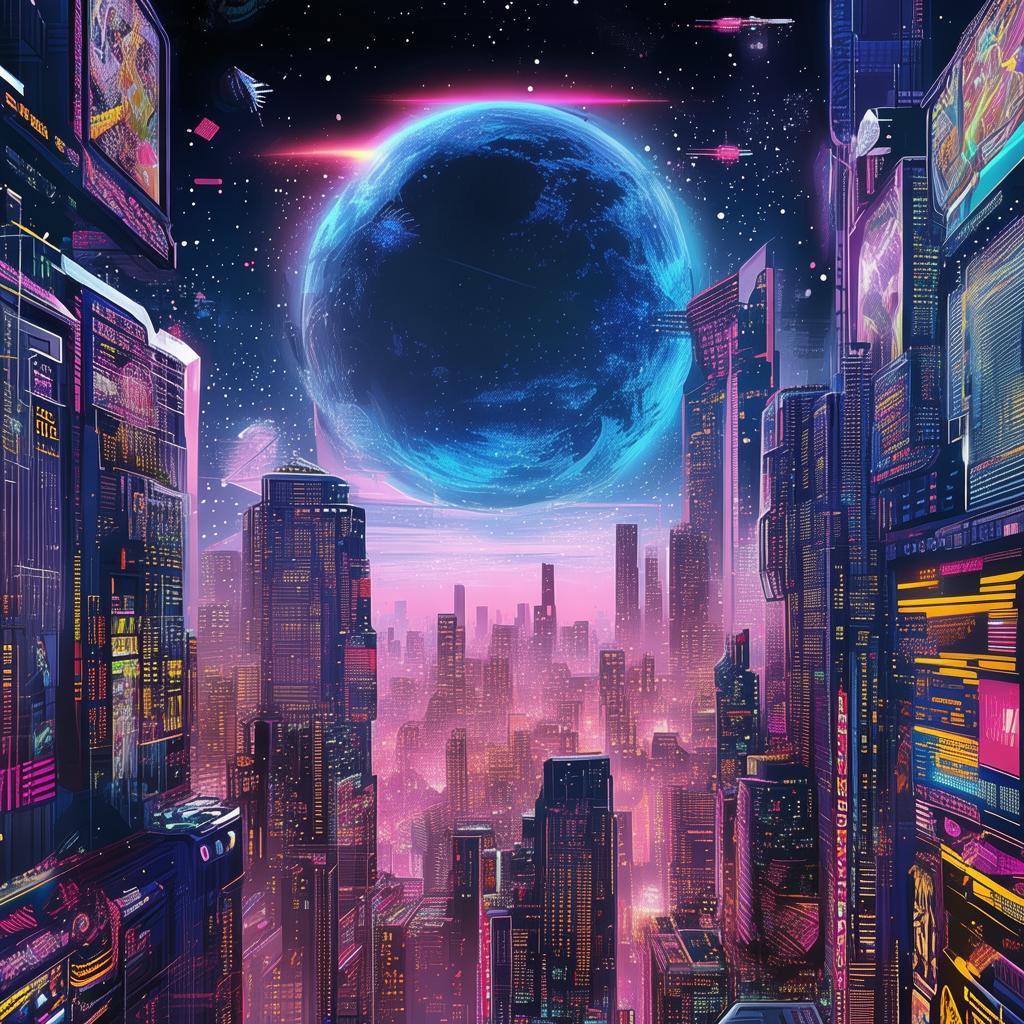Shadows of Tomorrow
In the year 2147, the world had been transformed by the relentless march of climate change. The once-vibrant cities now lay in ruins, their structures crumbling under the relentless pounding of storms and the encroaching sea. The remnants of humanity had retreated to fortified enclaves, where they clung to life with desperate measures.
Amara Voss was a geneticist in the city of Lysander, a place that had managed to maintain some semblance of order through rigorous genetic modifications. Amara's family had been pioneers in the field of genetic engineering, their work having saved countless lives by creating resilient strains of crops and livestock. But now, as the climate worsened, the future of their work was in jeopardy.
One evening, as Amara sat in her cluttered office, a knock at the door interrupted her thoughts. It was her younger brother, Elias, a mechanic who had always been skeptical of the family's genetic endeavors. "Amara, I need to talk to you," he said, his voice tense.
Elias handed her a data chip. "I found this in the ruins. It's a journal from a scientist who worked on a project that could change everything."
Curiosity piqued, Amara inserted the chip into her computer and began to read. The journal belonged to Dr. Elena Vasquez, a climatologist who had discovered a way to reverse the effects of climate change. The process involved manipulating the DNA of microorganisms that could absorb carbon dioxide from the atmosphere, effectively reversing global warming.
The journal was filled with detailed instructions and theories, but it also contained a warning: the process was dangerous and could have unforeseen consequences. Amara realized that this discovery could be the key to saving humanity, but it also meant taking a risk that could destroy everything her family had worked for.
The next day, Amara met with her mentor, Dr. Kaelan, who had been a part of the original genetic engineering project. "Amara, this could be the answer we've been looking for," he said. "But it's not just a simple fix. We need to ensure that it's safe and that it won't create new problems."
Amara knew that she had to act quickly. The climate was changing at an unprecedented rate, and every moment was critical. She gathered her team, including Elias, and presented the journal to them. "We have a chance to save the world, but it's not going to be easy," she said. "We need to replicate Dr. Vasquez's work and test it in a controlled environment."
As they worked, they faced numerous challenges. The genetic modifications required were complex and risky, and the team had to navigate the treacherous political landscape of Lysander. The government, which had grown increasingly oppressive, saw the potential of the project but was wary of its implications.
In the midst of their work, Amara discovered a hidden note in the journal. It was from Dr. Vasquez herself, detailing her concerns about the project. "Amara, I know you are a brilliant scientist, but you must be careful. The power you hold could be used for good, or it could be the end of us all."
The note shook Amara. She had to make a decision. Could she trust her family's legacy, or was it time to take a stand for a greater good?
As the project progressed, the team faced setbacks. One of the test subjects, a modified strain of algae, began to mutate, releasing a toxic substance into the atmosphere. The situation was dire, and the team had to act quickly to contain the damage.

Amara's brother, Elias, who had been skeptical from the start, now found himself at the heart of the crisis. "Amara, this is a disaster," he said. "We can't keep going. The risks are too great."
Amara knew he was right, but she also knew that the alternative was even more dangerous. "Elias, we can't stop now. We have to complete this. The future of humanity depends on it."
In a tense climax, the team managed to contain the mutation, but at a great cost. The facility was damaged, and several team members were injured. Amara was forced to make the hardest decision of her life: to continue with the project, despite the risks, or to abandon it and let humanity face an uncertain future.
With a heavy heart, Amara chose to continue. "We have to finish this," she said. "For the sake of everyone."
As the project neared completion, the government stepped in, demanding control over the technology. Amara knew that if they gave in, the project would be used for the wrong purposes. She stood her ground, risking her family's safety and her own reputation.
In a dramatic showdown, Amara confronted the government's leader. "You cannot control this technology. It is too powerful, too dangerous. It must be used for the greater good."
The leader hesitated, then nodded. "Very well, Amara. You have your way."
With the project finally complete, the team released the modified microorganisms into the atmosphere. The results were immediate and dramatic. The carbon dioxide levels began to drop, and the climate started to stabilize.
Amara stood on the roof of the facility, looking out at the horizon. The world was still far from perfect, but there was hope. "We did it," she said to Elias, who stood beside her. "We did it."
The next day, Amara and her team were hailed as heroes. The world had been given a second chance, and it was up to them to ensure that it was used wisely.
As the sun set over the horizon, casting long shadows over the city, Amara realized that the true legacy of her family was not just the technology they had created, but the hope they had given to a world that needed it most.
✨ Original Statement ✨
All articles published on this website (including but not limited to text, images, videos, and other content) are original or authorized for reposting and are protected by relevant laws. Without the explicit written permission of this website, no individual or organization may copy, modify, repost, or use the content for commercial purposes.
If you need to quote or cooperate, please contact this site for authorization. We reserve the right to pursue legal responsibility for any unauthorized use.
Hereby declared.









